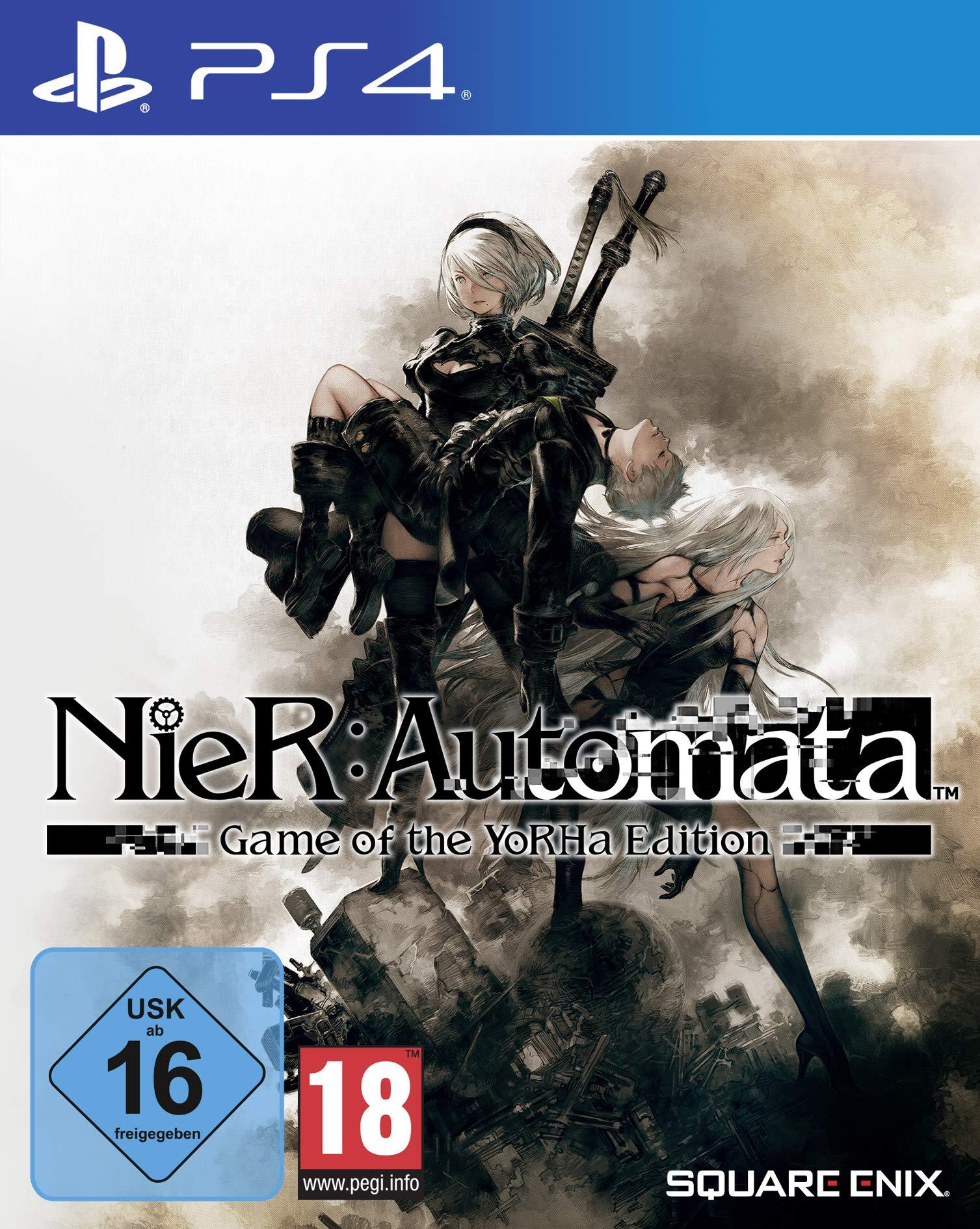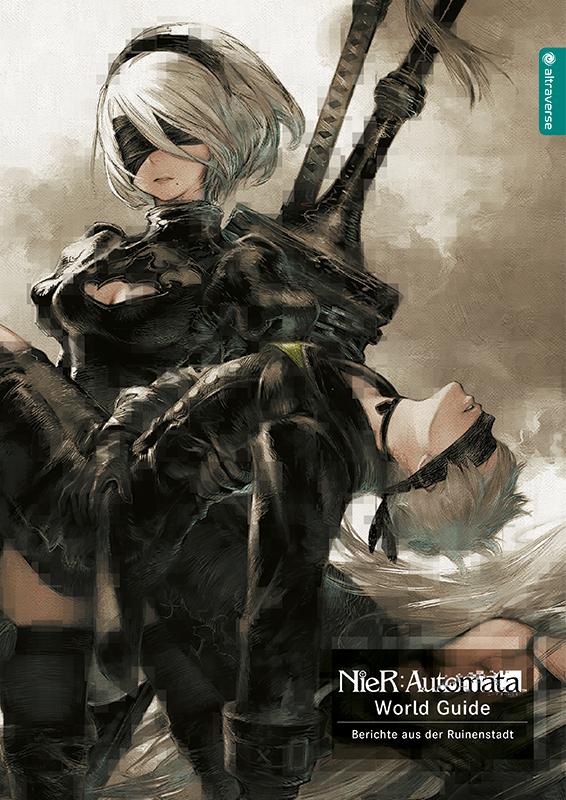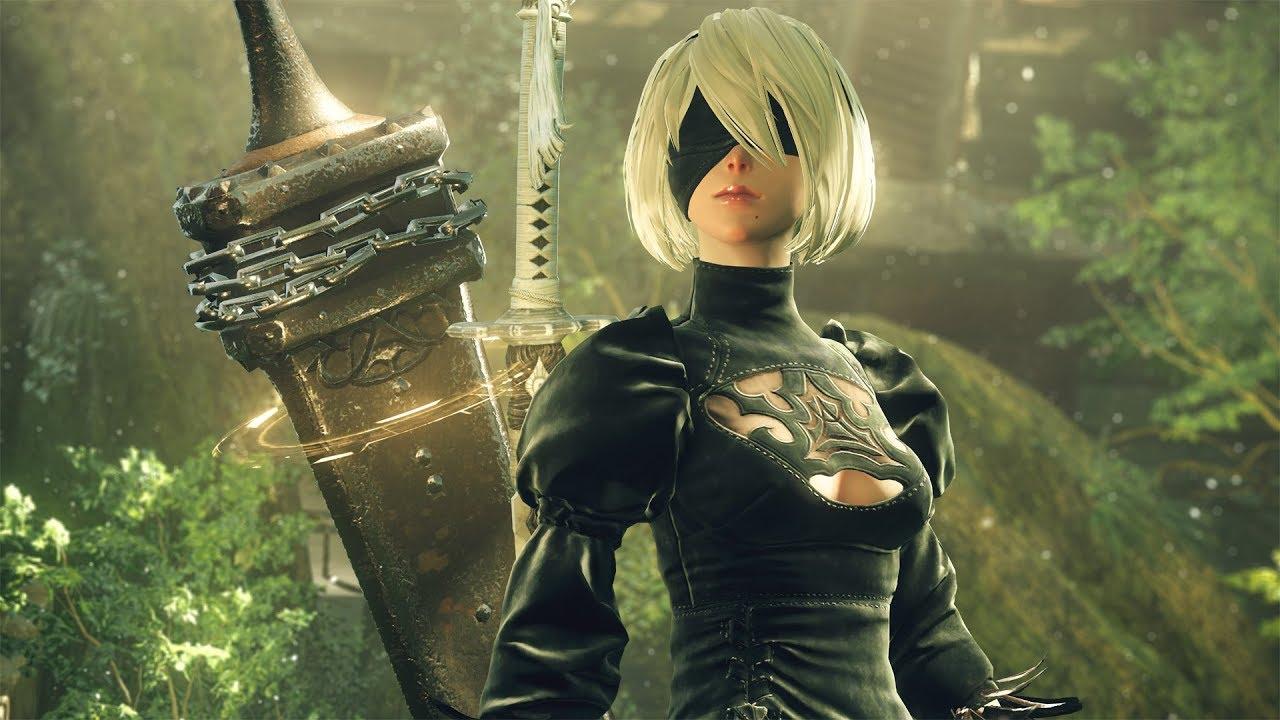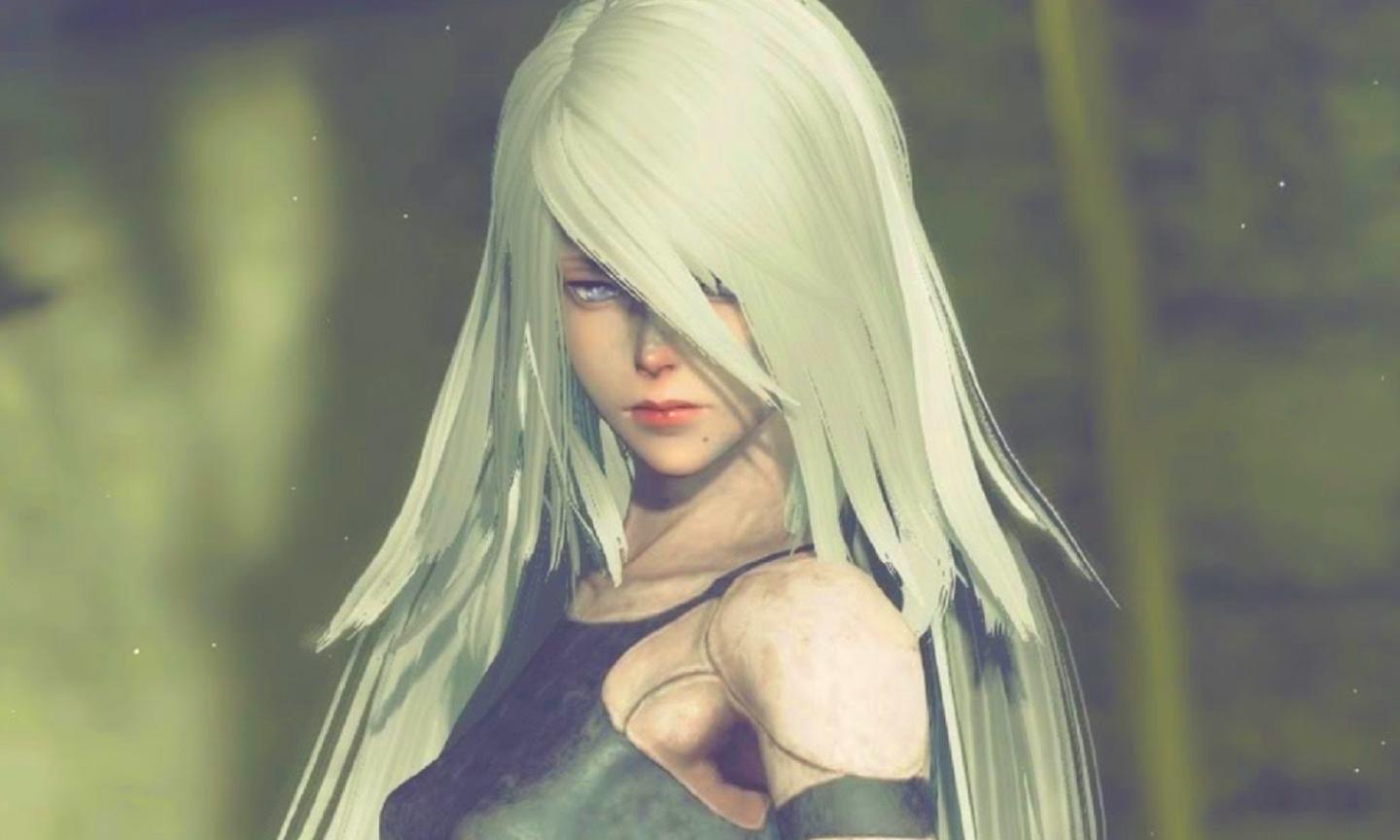In a world where the lines between creator and critic blur, and the whispers of Western gamers can either make or break a title, one visionary developer dared to defy convention. Yoko Taro, the mastermind behind the enigmatic ‘Nier Automata,’ found himself at the helm of a game that would shatter expectations and defy categorization. Yet, as he navigated the uncharted waters of his magnum opus, Taro received an intriguing directive: to disregard the opinions of the Western world. This seemingly counterintuitive approach raises more questions than answers. What drove this decision, and how did it shape the ultimate vision of ‘Nier Automata’?
Creating Games Without Compromise
Yoko Taro’s studio, PlatinumGames, faced creative challenges when developing Nier Automata, particularly when considering Western audiences. Taro revealed that his team was instructed not to prioritize Western opinions when designing the game.
This unconventional approach allowed the team to focus on authentic storytelling and unique gameplay mechanics. As a result, Nier Automata stands out from other games in the action RPG genre. The benefits of this approach are evident in the game’s features:
- Memorable Characters: Nier Automata boasts a cast of believable and complex characters, each with their own backstories and motivations.
- Immersive Storyline: The game’s narrative explores mature themes and offers an unparalleled narrative experience.
- Blending Genres: Nier Automata seamlessly merges action combat and RPG elements with other styles, creating a refreshing experience for players.
| Key Features | Outcome |
| Ignore Western opinions | Authentic storytelling |
| Focus on unique mechanics | Refreshing gameplay experience |
| Explore mature themes | Immersive narrative |

The Pressure of Western Audience Expectations
The unseen weight of global scrutiny, game developers often find themselves torn between staying true to their creative vision and catering to the diverse tastes of their international audience. When Nier Automata’s director, Yoko Taro, embarked on the project, he must have been acutely aware of the challenges that lay ahead. With the weight of western audience expectations hanging in the balance, it would have been easy to get lost in the sea of differing opinions.
However, as the story goes, Taro was “ordered” to ignore what the west thought of his game. And to this, he remained steadfast, true to his artistic vision, even when faced with criticism from some quarters that his approach was too ‘Japanese’. This decision was likely influenced by a multitude of factors including:
- Cultural nuances and sensibilities that may not translate well across international borders.
- Specific themes and motifs that were integral to the Japanese gaming landscape but may not have resonated with Western players.
- The director’s own experiences and perspectives which may have diverged from those of his global audience.
By choosing to disregard the pressure from his western fanbase, Taro has solidified his position as an innovative and bold video game director, committed to artistic expression, a quality that is hard to find in today’s industry where reception and criticism can often cloud creative decision-making processes.
Also, worth considering are the various factors contributing to the unique blend of Nier Automata‘s style and themes as outlined below:
| Factor | Description |
|---|---|
| Unsettling narratives | Exploring themes of existentialism, sci-fi, and the posthuman condition, Automata often pushes the player out of their comfort zone. |
| Unique battle mechanics | Combining a fluid action-based battle system with deep RPG elements, Automata delivers frantic and thrilling combat sequences. |
| Cultural and pop historical references | Paying homage to Japanese culture, anime and manga, from subtle nods in environmental design to audacious directorial choices. |

Nier Automatas Unique Vision
Nier Automata’s story is complex, interweaving multiple narratives and timelines, all while exploring existential questions about the nature of humanity and artificial intelligence. The game’s world is eerily post-apocalyptic, set on a desolate Earth abandoned by humans who have fled to the moon.
One of Nier Automata’s defining features is its multiple routes and endings, a design choice that rewards multiple playthroughs. In a table style="width:100%; border-collapse:collapse; margin-bottom:20px" series of dramatic shifts, players experience the story from different perspectives –androids 2B and 9S, the enigmatic Adam and Eve, and even the machines themselves.
| Route | Completed Playthroughs Required | Ending Unlocked |
|---|---|---|
| Route A | 1 | Ending A |
| Route B | 1 | Ending B |
| Route C | 2 | Ending C and D |
| Route D | 3 | Ending E |

The Culture of Game Development
Game development is an intricate blend of art, storytelling, and technology. It requires a deep understanding of the player’s psyche, as well as a keen awareness of industry trends. However, it’s not uncommon for game developers to feel constrained by the expectations of their Western audience. Often, the desire to appease Western players can result in a compromised vision, one that fails to reflect the creator’s true intent. This was the challenge faced by Yoko Taro, the director of Nier Automata, when he was instructed to disregard the Western perspective.
When creating Nier Automata, Yoko Taro was tasked with crafting a game that would appeal to a global audience. However, he was also ordered to dismiss any concerns about how his game might be received in the West. This unorthodox approach allowed Taro to focus on his own vision, rather than trying to accommodate the perceived tastes of Western gamers. The result was a game that was both critically acclaimed and commercially successful, one that resonated with players worldwide. Some of the features that contributed to the game’s success include:
| Unconventional storytelling | A complex narrative that blended science fiction and fantasy elements. |
| Multiple genres | A unique blend of action, role-playing, and exploratory gameplay. |
| Atmospheric soundtrack | A haunting and emotive score that perfectly complemented the game’s atmosphere. |
The success of Nier Automata serves as a testament to the power of creative freedom in game development. By ignoring the preferences of Western gamers, Yoko Taro was able to craft a game that was truly his own, one that resonated with players on a deeper level.

Diverging Opinions and Creative Freedom
As soon as director Yoko Taro was given the green light to create Nier Automata, he was also told to disregard any expectations or criticism from Western gamers, which gave him immense creative freedom. This trust was a huge weight off his shoulders, allowing him to pursue a unique vision and focus solely on his art, rather than trying to cater to a global audience. In an industry where international appeal and broad marketability are often seen as crucial factors, it’s refreshing to see a developer being given the freedom to follow their muse.
The results of this independence can be seen in the game’s unapologetic emphasis on quirky characters, existential themes, and an abstract narrative. The way Taro chose to defy conventions and traditions speaks to a broader issue within the gaming industry – the tension between creative autonomy and commercial viability. Not all games are made equal, and some developers are more suited to working within established genres rather than breaking molds. That being said, when developers are given the freedom to explore uncharted territory, it can lead to games that truly stand out from the crowd. Some examples of such games include:
- What Remains of Edith Finch – a BAFTA-winning game that defies traditional genre classification;
- Hyper Light Drifter – a game with a unique art style and narrative that sparked a lot of conversations;
- Cuphead – a visually striking game that blended run-and-gun action with turn-of-the-century style.
It’s worth noting that sometimes, games with seemingly minimal market appeal can generate a surprising amount of buzz among gamers, not because they’re chasing after mainstream trends, but because they’re offering something unique. Below is a rough breakdown of how innovative games like these can shape the market:
| Game type | Market impact |
|---|---|
| Conventional titles with a broad appeal | Commercial success, steady player base |
| Indie games, quirky and innovative | Niche audience, critical acclaim, shaping market trends |

Cultural Sensitivity and Ignoring the Noise
Cultural sensitivity is a delicate balance of respecting the sensibilities of one’s own culture while being aware of the differences in other cultures. This can be particularly challenging in the world of gaming, where one game can be simultaneously released in multiple countries with diverse cultural backgrounds.
In game development, understanding and respecting cultural differences can be crucial, but so can knowing when to ignore outside opinions. This is evident in the approach to developing Nier: Automata, where the developers decided to stay true to their vision rather than cater to the perceived expectations of Western audiences. Their confidence in their product paid off, as the game received widespread acclaim.
While the approach may have been unconventional, it worked in the case of Nier: Automata. Ignoring outside opinions allowed the developers to maintain their artistic vision, resulting in a unique and captivating game. By exploring themes relevant to Japanese culture, they inadvertently created a game with broad appeal.
| Developing with Cultural Sensitivity |
|---|
| – Understand your target audience to ensure that cultural nuances are not misinterpreted. |
| – Research cultural differences to avoid unintended offense. |
| – Stay true to your vision, and avoid compromising for the sake of outside expectations. |
- Cultural nuances are often nuanced and require a deep understanding of a culture to be appreciated or critiqued.
- At the end of the day, a developer must be confident in their vision and willing to take calculated risks to bring a unique gaming experience to players.

Yoko Taros Experience in Game Development
Yoko Taro, the renowned director of Nier Automata, has had a varied and often unconventional experience in the game development world. With over three decades of experience, Taro has worked on numerous iconic titles, but it was Nier Automata that propelled him to international fame.
Taro’s approach to game development is distinct and unorthodox, often blurring the lines between creative vision and commercial viability. This is reflected in some of his notable works:
- Drakengard (2003) – This action RPG was Taro’s directorial debut and despite receiving mixed reviews, it has garnered a cult following.
- Nier (2010) – A dark fantasy RPG, praised for its intricate storyline and unique combat mechanics.
- Nier Automata (2017) – This critical and commercial triumph solidified Taro’s reputation as a visionary director.
| Some of Yoko Taro’s Works: |
| Drakengard (2003) |
| Nier (2010) |
| Nier Automata (2017) |
Taro’s success, however, isn’t solely defined by the quality of his games. His candid attitude towards development, the industry, and fan expectations has captivated audiences worldwide. As an influential game developer, Yoko Taro has experienced firsthand the intersection of creative expression and commercial success, where he consistently strives to maintain a balance between originality and market appeal.
Game Development is a Global Experience
From the moment a game starts taking shape, its creators must consider a multitude of factors that can greatly impact the player’s experience. But what happens when the vision of the developer is influenced by external factors, such as the expectations of a specific audience? This raises the question of how much the global gaming community should shape the development of a game.
As the gaming industry continues to grow, more and more developers are working on titles that are meant to be enjoyed by players from all around the world. However, considering the complex diversity of gamers, it’s highly challenging to cater to the tastes and expectations of every single region. The following are some potential issues that game developers may face when considering the global audience:
- Localization challenges: Accommodating languages, cultural differences, and region-specific requirements can be an arduous process.
- Regulatory compliance: Adhering to various country-specific laws, guidelines, and content policies.
- Disparate player preferences: What may be popular in one region may not be well-received in another.
| Strategy | Potential Outcome |
|---|---|
| Focus on core vision | Remaining true to the developer’s creative intent, but possibly alienating certain regions. |
| Global audience-centric | Pleasing a broad range of players but risking compromises to the original vision. |
To Conclude
As Yoko Taro’s vision defied conventions and pushed the boundaries of storytelling, it’s clear that Nier Automata’s enduring allure lies not in its desire to please, but in its unwavering commitment to its artistic vision. In a world where games are often shaped by committee and focus group, the fact that Taro was given the freedom to ignore the expectations of the West and forge his own path is a testament to the power of creative autonomy. And as we continue to grapple with the existential questions posed by Nier Automata, we’re reminded that sometimes, it’s the things that don’t conform to our expectations that leave the most lasting impression.










